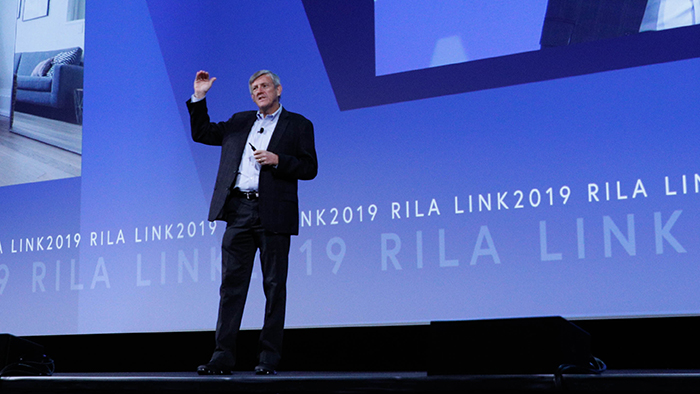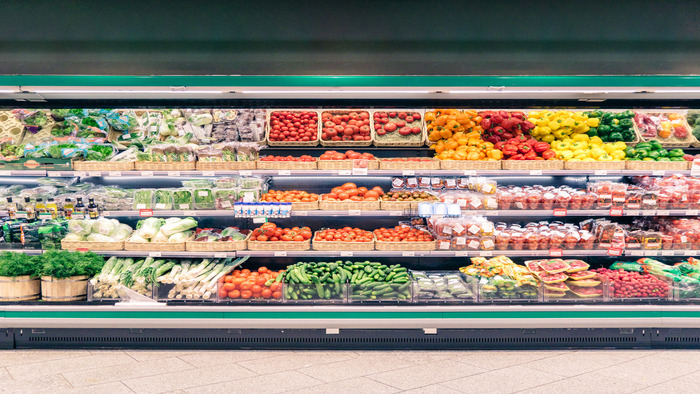Making The Case For MiniHubs
- By [ Jeff Ashcroft ]
- 03/12/2019
For me, the highlight of this year's RILA LINK Conference, the latest evolution of RILA's annual Supply Chain event, came in the opening keynote with Dick Johnson, Chairman and CEO of Footlocker.
Multiple times during his session he spoke of what he sees as the burning need for Footlocker to establish MiniHubs of inventory closer to both customers and local stores to satisfy their growing omnichannel needs.

As someone who's been a proponent for Distributed Logistics for a number of years now, it was music to my ears to hear the top leader of a major retail organization making the call to move forward with MiniHubs as a key part of their go forward retailing strategy.
Even more interestingly, during the Q&A when Dick Johnson was asked if he could share more with the assembled retail supply chain leaders about the Footlocker strategy for MiniHubs, he was brutally honest in saying they were still not sure how they were going to do it, just that it needed to be done.
So in order to make the case for adding MiniHubs to your fulfillment network, what are the seven ways that adding MiniHubs can benefit your logistics network and overall retail business?
Benefit from Distributed Order Management (DOM) - Working with a series of MiniHubs will require effective order management allowing all parties to rapidly know if the In-House Fulfillment Center, Store or which of the provider of Micro-Fulfillment centers will be delivering the consumer order. All successful retailers and etailers going forward will almost certainly need some form of DOM capability and integrating with MiniHubs might provide these capabilities at virtually no additional cost as an integrated component of the service offering.
Cost Effectively Add Automated Local Micro-Fulfillment Centers - As mentioned, most current fulfillment networks cannot provide the needed improvements in consumer delivery without massive additional investment. Working with a MiniHub Provider can allow logistics and e-commerce business executives to work together to design the solution which best fits the needs of the business. Important to note is the flexibility in the MiniHub offerings means that the number and locations of micro-fulfillment centers used can be adjusted on an ongoing annual basis to match the changing needs of the business and consumers. Driving the need for these micro-fulfillment centers is something called The Automated Local Fulfillment Imperative.
Capture Delivery Savings Utilizing Local to Local Delivery Options - Shifting inventory closer to customers and shipping from stores means traditional courier hub and spoke models are becoming less efficient as they add time and cost to delivery. Utilizing a MiniHub micro-fulfillment network provides a methodology of intercepting these shipments and redirecting for immediate delivery and lower delivery cost.
Improved Carbon Footprint for Network – By making the shift to more local delivery options your overall carbon footprint can also be significantly reduced by utilizing more short distance ground transportation option for last mile deliveries versus long distance air delivery services which release carbon higher in the atmosphere generating roughly four times the carbon impact.
Double, Triple or Quadruple Same & Next Day Delivery Coverage - Working with a MiniHub Fulfillment Provider means that businesses can quickly understand and implement the desired customer delivery service levels and geographic coverage. MiniHub models have been developed and show required micro-fulfillment center utilization in order to double, triple and quadruple the population covered by service level.
Benefit by Adding Flexible Replenishment Options for B2B Wholesale or Store Replenishment - Given the number of channels Brands and Retailers need to deliver to, the complexity and compliance requirements are now bordering on the ridiculous for in-house operations to support so many varying pack, label and deliver methods. Brands and retailers can ship product to the MiniHub in bulk and then MiniHub will configure and deliver based on the directions provided via the Distributed Order Management (DOM) system. As well, if desired rapid store replenishment at the each level for selected categories can also be driven from the MiniHub micro-fulfillment centers allowing for potential store space and inventory reductions
Sales Increases Based on Proximity to Customers – There's a growing body of evidence, and the prime example of Amazon, which suggests that utilizing MiniHubs to deploy inventory closer to customers and stores will also drive increased sales. Here's a blogpost I wrote called How Getting Logistically Closer to Customers Means More Sales which discusses this phenomena in greater detail.
So when you're considering your logistics network strategy going forward, be sure to include the option of utilizing MiniHubs as a potential variable component to ensure your retail supply chain is incorporating all potential solutions to drive the greatest value and benefit for the overall retail business and your customers.
Thanks again to RILA for a great LINK 2019 Conference and already looking forward to next year's event!
Cheers
Jeff Ashcroft


